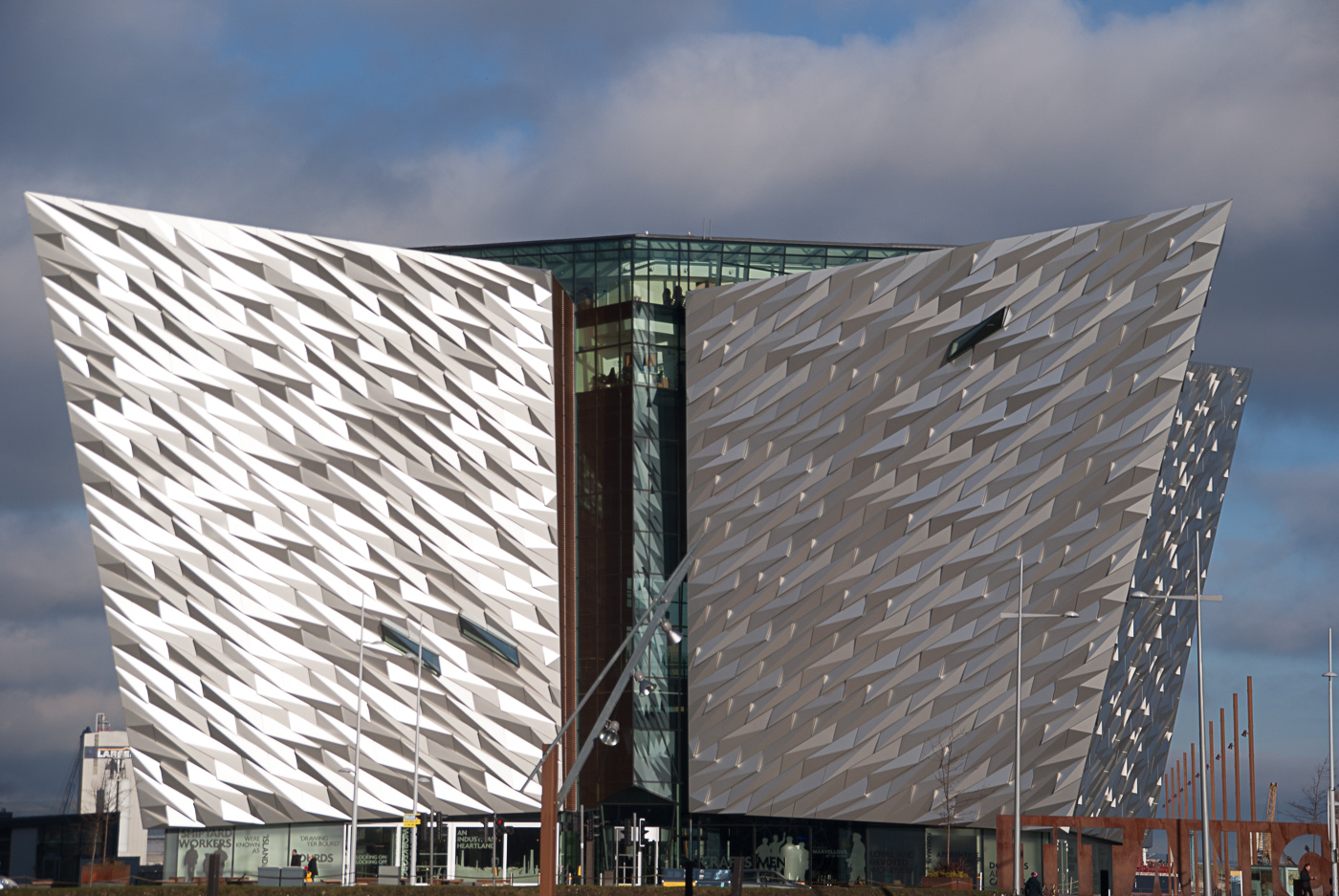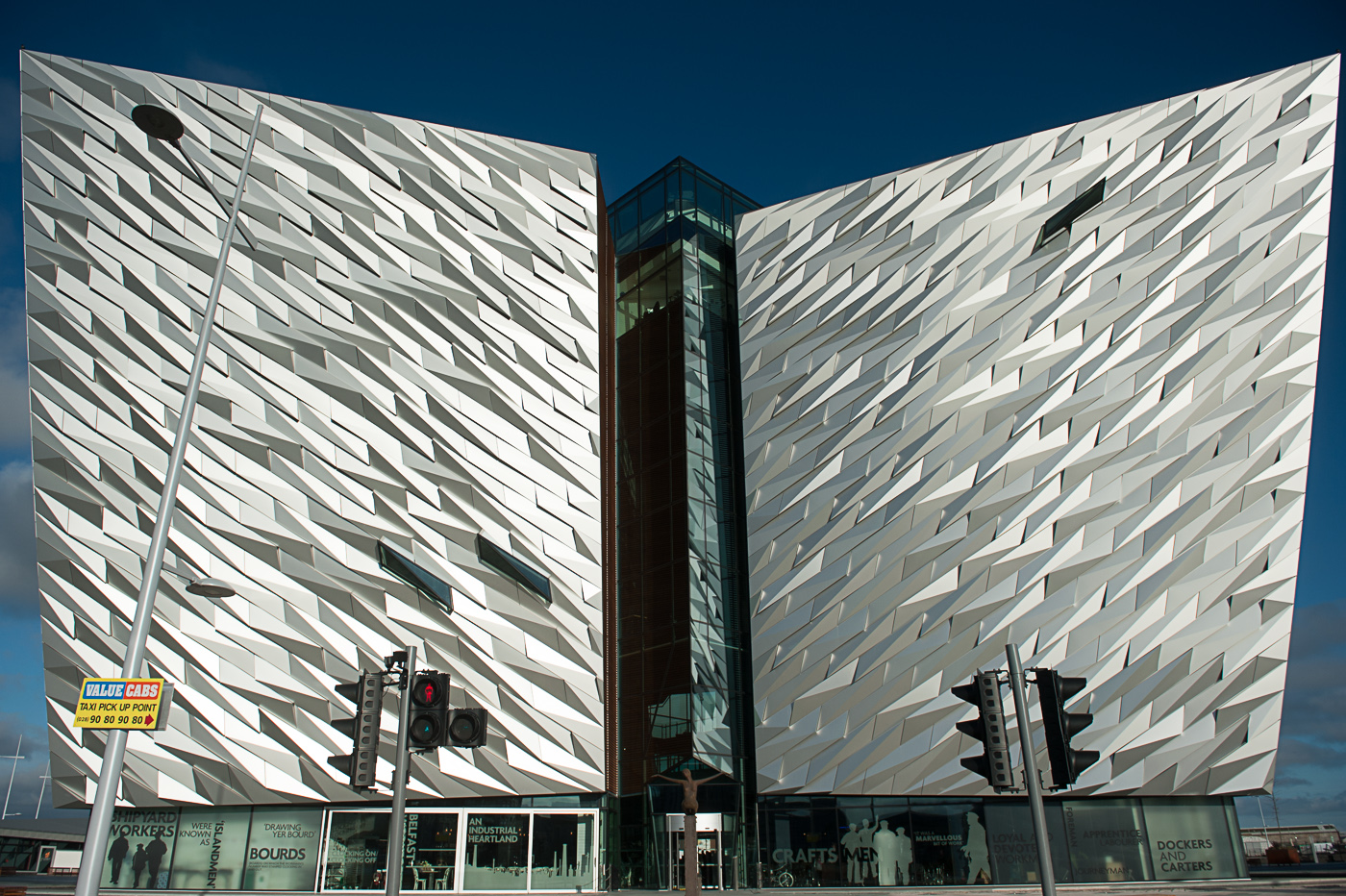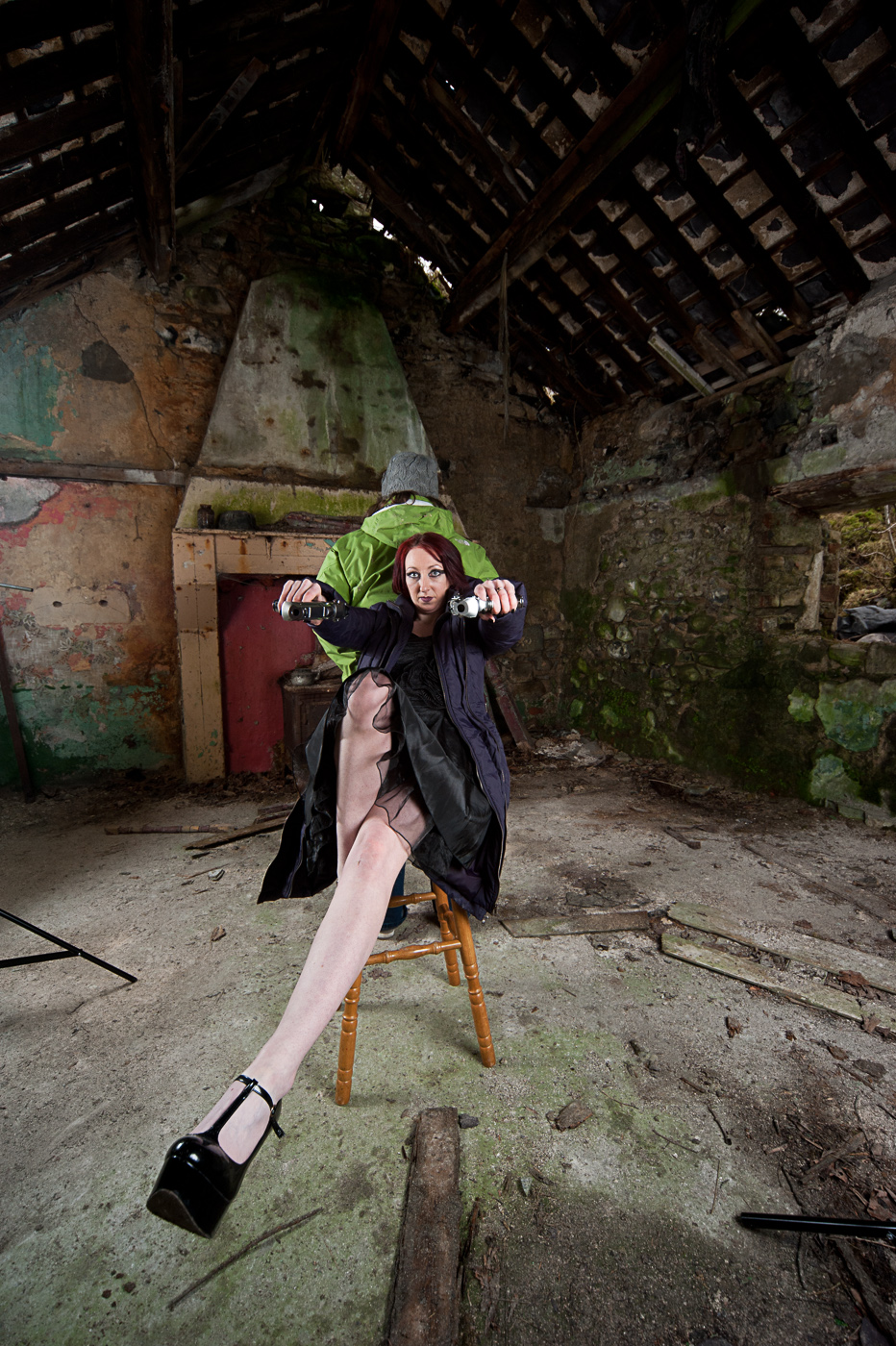The aim of this exercise was to take two photographs using a wide-angle and a telephoto lens. The photographs would be of the same subject with the same composition (i.e. filling the frame) taken at different focal lengths. To do this we were to take the first photograph with a telephoto lens, then fit the wide angle lens and move forward until the subject filled the frame once again, and take the second shot.

Photograph one was shot with a telephoto lens on a crop sensor camera at a focal length of 60 mm which roughly correlates to a full frame sensor at 120 mm. The second photograph was taken with a full frame camera at 24 mm focal length so essentially 100 mm difference in focal length.
The subject of the photograph is the Titanic visitor centre in Belfast and I chose this building because it has a little bit of depth which is more prominent in the first picture as we can see the walls protruding out from the central core of the building. As I moved forward to fill the frame using the wide angle lens perspective adjusts and we can no longer see the second part jutting out behind the building at the right.
So, how do the two photographs varying character. In the second photograph the building seems larger (it seems to loom over the viewer) and the corners extend out towards the edges of the frame more prominently than in the first photograph. In the first photograph the building seems smaller, squatter, and further away. This effect is known as perspective distortion. Another indicator of this perspective distortion is the lamppost and traffic lights in the second photograph being much larger and prominent than in the first photograph even though the building is virtually the same size in both shots.
This distortion would have become much more prominent if I had been equipped with a wider angle lens and moved even closer to the building. This further distortion at wider angle is illustrated in the photo below which we shot using a 14 mm wide angle lens on a full frame camera. The model seems to elongate into the centre of the photograph and her leg appears to be stretching and enlarging towards the corner of the image.
Probably the most well-known example of this effect is the dolly zoom (sometimes known as the Hitchcock zoom) and was used to great effect in Alfred Hitchcock’s movie vertigo and also the very famous scene in Jaws were Roy Schneider realises there’s a shark swimming with the tourists on the very crowded beach. The dolly shot is achieved by moving the camera towards the subject whilst zooming out. We perceive the subject to be moving closer to us (in the case of the Jaws movie Roy Schneider) whilst background seems to move further away.
Reflection
I couldn’t know what to expect from the final images for starting this exercise. If I had understood perspective distortion prior to taking shots I would have approached the building from a different angle to better illustrate the effect.
On a positive note I am starting to get to grips with the self learning nature of the course. Using this exercise an example I have gone from knowing nothing about perspective distortion to being able to review my images understand how I would go about increasing the effect of the distortion.

